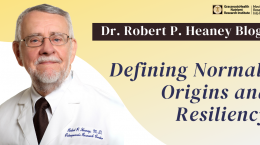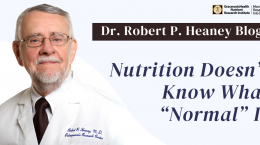
The IOM Miscalculated Its RDA For Vitamin D
The true RDA for vitamin D is about 10 times higher than the IOM has said – not a small error. Read on to understand how this might have happened and why this is...

The true RDA for vitamin D is about 10 times higher than the IOM has said – not a small error. Read on to understand how this might have happened and why this is...

Dr. Heaney explains how it was that the U.S. Preventive Services Task Force found the evidence in support of vitamin D supplementation inconclusive, while vitamin D experts find it persuasive Key Points In 2013 the...

Dr. Heaney describes two additional physiology-based approaches to defining “normal” nutrient status – something that the currently employed phenomenological approach cannot do Key Points Nutrition policymakers lack a shared vision of “normal” and are...

For all nutrients for which we can define a plateau, the determination of the nutrient requirement follows directly from these behaviors; an intake sufficient to get 97.5% of a healthy population up onto the...

From a physiological set-point perspective, ‘normal’ vitamin D status would be a 25(OH)D concentration that requires little or no compensatory PTH response under basal conditions, where minimal adaptation is necessary, which occurs around 50...

Fortunately there are alternative approaches that could be used and that have clear parallels in other fields of medical physiology Key Points We say an engine is running normally if it is doing what...

Dr. Robert Heaney left us on August 6, 2016, and some time after his passing, his blog site at Creighton University was taken down; GrassrootsHealth is honored to be bringing his blogs back to life...